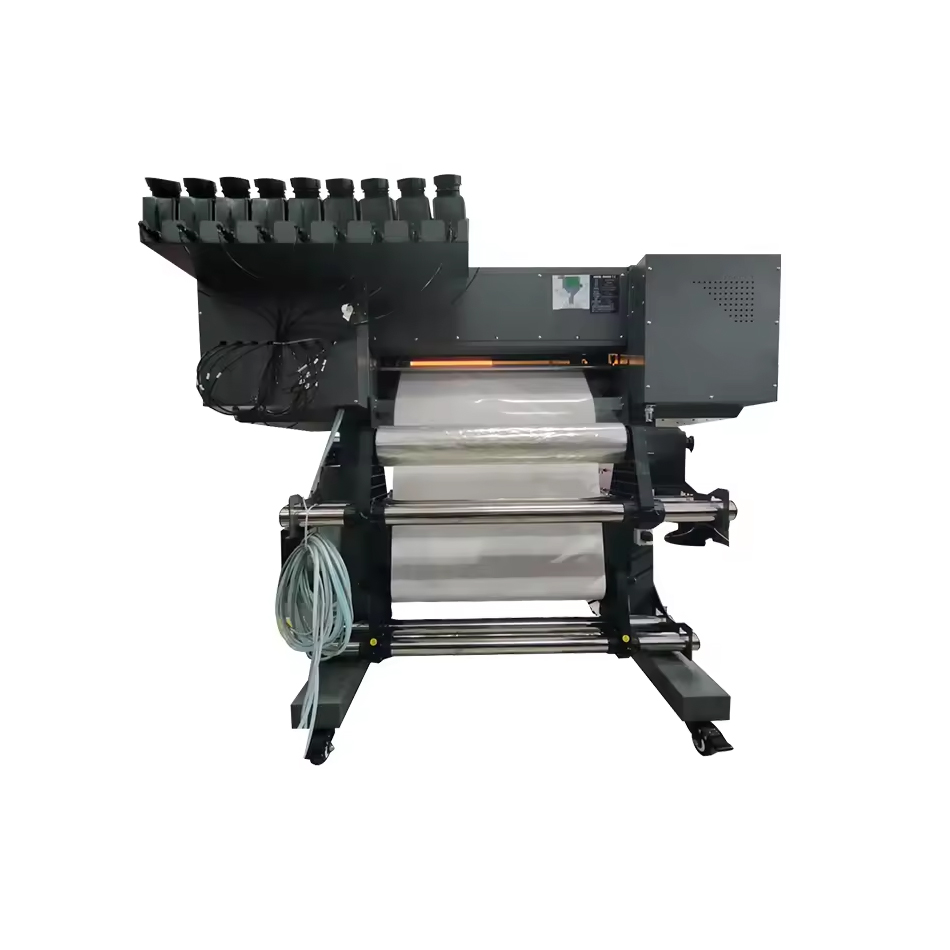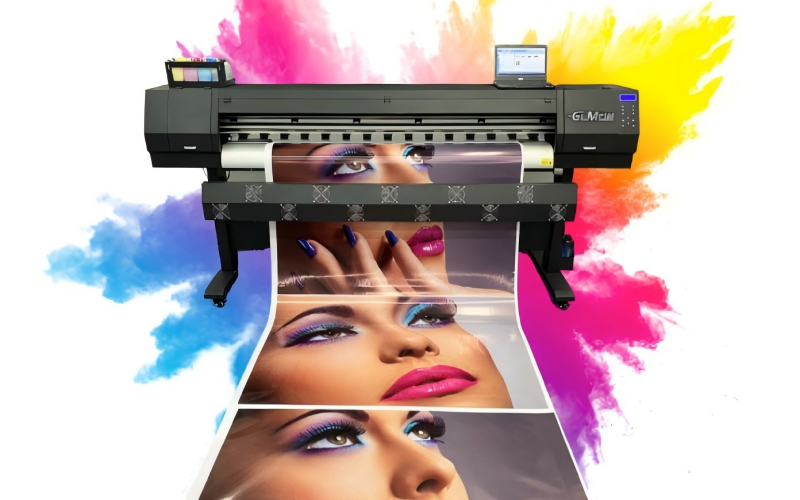Is UV Print Better Than Eco Print? A Comprehensive Comparison for B2B Buyers
UV printing and eco-solvent (eco) printing are two common choices when selecting a printing technique for your company. Although each has special benefits, which is most suitable for your requirements? To assist you in making an informed choice, we will dissect the distinctions between eco and UV printing in this post.
Glass, Metal, Wood, Acrylic, and Plastic
Durability: UV prints are perfect for outdoor and prolonged use because they are impervious to fading, water, and scratches.
Bright colours: UV printing creates crisp, high-quality photos with vibrant colours.
Versatility: Increases application possibilities by working with both hard and flexible materials.
Eco-Friendly Choice: Compared to conventional solvent inks, many UV inks have lower levels of volatile organic compounds (VOCs).

Material Restrictions: When exposed to UV radiation, certain heat-sensitive materials may distort.
Eco-Solvent Printing: What is it?
In eco-solvent printing, ink is applied to materials using gentle, biodegradable solvents. Businesses searching for a cost-effective and eco-friendly solution frequently choose it. Typical uses consist of vehicle coverings.
Posters, banners, and wall graphics
Benefits of Eco-Solvent Printing
Lower Cost: Compared to UV printers, eco printers and inks are typically less expensive.
Compatibility with Flexible Materials: Performs admirably on flexible surfaces such as vinyl and cloth.
No Odour or Dangerous Fumes: Eco-solvent inks are safer to use indoors than conventional solvent inks.
Extended Printhead Life: Because eco-solvent inks are kinder to printer parts, they require less upkeep.
Less Durable: Compared to UV printing, eco prints are more likely to fade or damage.
Restricted Use on Rigid Materials: Without specific coatings, rigid surfaces like metal or glass are not the best candidates.

Select UV Printing If Necessary:
High durability (industrial labels, outdoor signs) ✔ Quick manufacturing rates
Printing on hard surfaces (wood, metal, and glass) ✔ Creating vibrant, scratch-proof prints
If you require: Select Eco-Solvent Printing
Reduced initial expenses
✔ Printing on flexible materials (banners, vinyl, stickers) ✔ An environmentally responsible choice with low emissions
✔ High-quality printouts for temporary to permanent use
In conclusion
Both eco-solvent and UV printing offer advantages. UV printing is perfect for high-end, long-lasting applications because of its exceptional speed, durability, and versatility. On the other hand, eco-solvent printing is an economical and sustainable choice for indoor use and flexible materials.
Discuss your project requirements with a professional printing service if you're still not sure which approach is appropriate for your company.
How Does UV Printing Work?
When ink is printed onto a surface, UV printing uses ultraviolet light to rapidly cure (dry) it. High-speed, high-quality printing on a variety of materials is made possible by this technology, including:Glass, Metal, Wood, Acrylic, and Plastic
Benefits of UV Printing
Quick Drying Time: Production is accelerated since UV ink cures instantly when exposed to UV light, eliminating the need to wait for prints to dry.Durability: UV prints are perfect for outdoor and prolonged use because they are impervious to fading, water, and scratches.
Bright colours: UV printing creates crisp, high-quality photos with vibrant colours.
Versatility: Increases application possibilities by working with both hard and flexible materials.
Eco-Friendly Choice: Compared to conventional solvent inks, many UV inks have lower levels of volatile organic compounds (VOCs).

Negative aspects of UV printing
Greater Initial Cost: Compared to eco-solvent options, UV printers and inks are more costly.Material Restrictions: When exposed to UV radiation, certain heat-sensitive materials may distort.
Eco-Solvent Printing: What is it?
In eco-solvent printing, ink is applied to materials using gentle, biodegradable solvents. Businesses searching for a cost-effective and eco-friendly solution frequently choose it. Typical uses consist of vehicle coverings.
Posters, banners, and wall graphics
Benefits of Eco-Solvent Printing
Lower Cost: Compared to UV printers, eco printers and inks are typically less expensive.
Compatibility with Flexible Materials: Performs admirably on flexible surfaces such as vinyl and cloth.
No Odour or Dangerous Fumes: Eco-solvent inks are safer to use indoors than conventional solvent inks.
Extended Printhead Life: Because eco-solvent inks are kinder to printer parts, they require less upkeep.
Eco-Solvent Printing Drawbacks
Slower Drying Time: Before handling, prints might need more time to dry.Less Durable: Compared to UV printing, eco prints are more likely to fade or damage.
Restricted Use on Rigid Materials: Without specific coatings, rigid surfaces like metal or glass are not the best candidates.

Which Is Better, Eco Print or UV Print?
Your unique demands will determine which option is best for you:Select UV Printing If Necessary:
High durability (industrial labels, outdoor signs) ✔ Quick manufacturing rates
Printing on hard surfaces (wood, metal, and glass) ✔ Creating vibrant, scratch-proof prints
If you require: Select Eco-Solvent Printing
Reduced initial expenses
✔ Printing on flexible materials (banners, vinyl, stickers) ✔ An environmentally responsible choice with low emissions
✔ High-quality printouts for temporary to permanent use
In conclusion
Both eco-solvent and UV printing offer advantages. UV printing is perfect for high-end, long-lasting applications because of its exceptional speed, durability, and versatility. On the other hand, eco-solvent printing is an economical and sustainable choice for indoor use and flexible materials.
Discuss your project requirements with a professional printing service if you're still not sure which approach is appropriate for your company.
RECENT POSTS
-
Is UV Print Better Than Eco Print? A Comprehensive Comparison for B2B Buyers
-
Is UV Printing Better Than Pad Printing?
-
Ist UV-Druck besser als Öko-Druck? Ein umfassender Vergleich für B2B-Käufer
-
Is A UV Printer Permanent?
-
Open spray machine: the perfect supporting equipment to improve the efficiency of DTG industrial printers
Application
-
 Vango DTF printerOur DTF printer adopts an all-in-one printing design, which is more space-saving and easier to operate.This is our printing show.
Vango DTF printerOur DTF printer adopts an all-in-one printing design, which is more space-saving and easier to operate.This is our printing show.
Wide applications,design for textile printing,Suitable for all kinds of fabrics, T-shirts,leather, bags and shoes etc. -
 Hstar printer in Turkey ExhibitionIn September, our company participated in the Turkish advertising exhibition. At the exhibition, many people are interested in our machine.
Hstar printer in Turkey ExhibitionIn September, our company participated in the Turkish advertising exhibition. At the exhibition, many people are interested in our machine.
More Application








.jpg)



